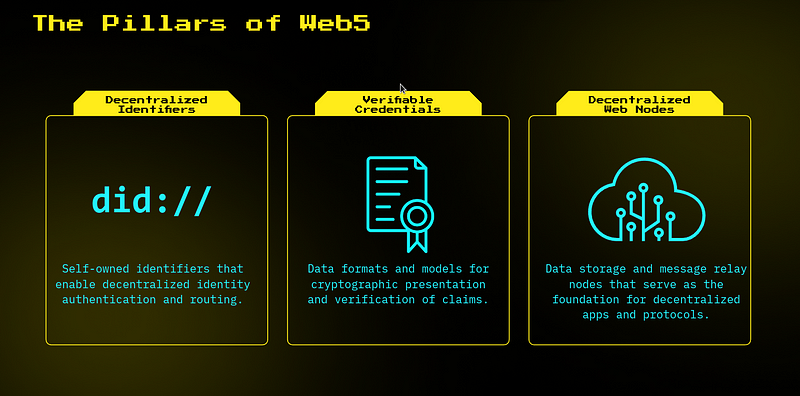web5 - Busting Myths
 Ankit Singh
Ankit Singh
TBD team tweeted about web5 and from there the whole web3, web2 people are going crazy. Here is the tweet by TBD team 👇
In this presentation, they have explained their idea behiend web5 and what all needs to be implemented. If you look carefully they have divided it into three main parts. Check 4th page of the presentation.
https://docs.google.com/presentation/d/1SaHGyY9TjPg4a0VNLCsfchoVG1yU3ffTDsPRcU99H1E
Decentralized Identifiers
Verifiable Credentials
Decentralized Web Nodes
If you are into blockchain development, you may have heard about this. Let’s see what they are.
DID
Decentralized Identifiers are pseudo-anonymous identifier for any person, company or any object. DID’s are secured by private key so that only the owner have access to it’s functionalities. It can be used verifying anything on-chain. You can read more about this in this article - https://consensys.net/blockchain-use-cases/digital-identity/
Verifiable Credentials
A Verifiable Credential can represents any information that is phisically present but it’s digitally signed. It makes the information tamper proof using cryptography and hashing.
Checkeout this for more - https://www.w3.org/TR/vc-data-model/#what-is-a-verifiable-credential
Decentralized Web Nodes
Data storage and message relay nodes that serve as the foundation for decentralized apps and protocols. It’s like running different nodes on your system and it’s copying data to one another locally. I know, it’s still confusing, but there is very less information about this. Check this for more https://identity.foundation/decentralized-web-node/spec/#terminology
The catch here is that these things are already built. Check IPFS(https://ipfs.io/) and Ceramic Network(https://ceramic.network/) and see what they have implemented.
Subscribe to my newsletter
Read articles from Ankit Singh directly inside your inbox. Subscribe to the newsletter, and don't miss out.
Written by
